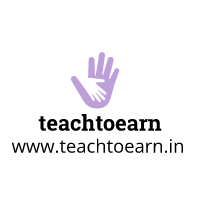Schools are supposed to prepare our children for life—but is that really happening? While the world outside is being transformed by artificial intelligence, digital technology, and automation, most schools are still busy teaching the same syllabus designed decades ago.
Memorizing textbook answers, writing three-hour exams, and copying notes from the board—none of these prepare children for a future where skills like coding, creativity, communication, and problem-solving will be essential.
Let’s listen in on a conversation between two parents—Ritika and Maya—who explore this exact question: Are our children truly future-ready? And what can we do differently?

Ritika: You know, Maya, my son scored 92% in his school finals, but he still doesn’t know how to send a proper email or use Excel.
Maya: That sounds familiar. My daughter can recite all the Mughal emperors in order but can’t create a basic presentation on her own. I sometimes wonder—what exactly are they learning?
Ritika: Exactly! And the world outside is changing so fast. AI is writing emails, students abroad are learning Python in primary school, and here we are still doing handwriting practice.
Maya: The truth is, schools are not preparing our kids for the future—they’re preparing them for the past.
Ritika: That’s a strong statement. But sadly, it’s true. I recently heard about a concept called “future-ready skills.” Do you know what that includes?
Maya: Oh yes, I’ve been reading up on that. Future-ready skills are things like:
- Digital literacy – knowing how to use a computer, search smartly, use AI tools
- Creative thinking – solving problems in new ways
- Collaboration – working in teams, even virtually
- Communication – writing emails, making presentations, public speaking
- Self-learning – using the internet to learn anything, anytime
Ritika: Hmm. And schools are still focused on remembering facts and writing long answers.
Maya: Exactly. The real world needs creators, coders, entrepreneurs, content writers—not just kids who can write an essay on “My Hobby.”
Ritika: So how do we fix this? Private schools charge lakhs of rupees but still follow the same outdated methods. Tuition classes are even worse—they just train kids to crack MCQs and tests.
Maya: That’s why I joined something called a digital learning pod last year, through a platform called Teach to Earn.
Ritika: A learning pod? Isn’t that like homeschooling?
Maya: Not exactly. It’s a small group of kids in our community who learn together on APNA PCs—these are affordable educational computers fully loaded with videos, courses, coding platforms, English games, and even AI tools.
Ritika: Wow! That sounds interesting. But who teaches them?
Maya: They learn with each other. There’s a facilitator—someone like you or me—who guides them, not lectures them. The PC becomes the main teacher, and the kids explore based on what excites them.
Ritika: Sounds too free. Won’t kids just play games?
Maya: That’s the thing—these PCs don’t have useless games. They have fun, educational platforms like Khan Academy, Tux Typing, Scratch, and even CoTutor.ai and Beyond Exams, which simulate real-world learning.
One kid made a video documentary about clean water. Another designed his own quiz app. And all of them learned to use tools like Google Docs, Canva, and ChatGPT.
Ritika: That’s more than what schools do in 10 years!
Maya: And they’re not just learning facts. They’re learning how to think, how to research, how to express themselves. These are the real future-ready skills.
Ritika: And all this happens in your colony?
Maya: Yes. We converted a spare room into a pod. Just one APNA PC from Teach to Earn—it costs only ₹9,999. Totally affordable. No fancy classroom, no uniform. Just a safe space where learning feels exciting.
Ritika: I spend more than that on one online course for my son. And half the time, he doesn’t even finish it.
Maya: That’s because kids don’t want to be taught anymore. They want to explore. We parents need to stop chasing ranks and start building real skills.
Ritika: So your daughter doesn’t go to school now?
Maya: She does. But the pod is where the real magic happens. School is for marks. Pod is for mastery.
Ritika: That’s powerful. And you think this will help her in the long run?
Maya: Absolutely. She’s already doing freelance design work! At 14, she knows how to send invoices, communicate with clients, and use tools most adults don’t understand.
Ritika: Incredible. And here I was worried about whether my son will get into the “right stream” in 11th standard. Maybe that’s not even the point anymore.
Maya: Exactly. The world is moving fast. AI is replacing repetitive jobs. Kids who can learn, adapt, and communicate will win. Not just those who can mug up the periodic table.
Ritika: So how do I start something like this?
Maya: Go to www.teachtoearn.in. They’ll help you with everything—getting the APNA PC, training, community support. You can set up your own digital pod right in your building or home.
Ritika: You know what? I think I’m ready. I want my son to learn how to think, not just copy notes.
Maya: That’s the spirit! One parent at a time—we can build a whole new education system.
Let’s Prepare Our Kids for the Future
It’s time to stop relying on outdated schools and commercial coaching factories. Let’s empower our children with skills that matter—digital confidence, creativity, collaboration, and critical thinking.
💻 Get started with your own Teach to Earn Digital Learning POD
🌐 All you need is one APNA PC – fully equipped with future-ready tools , affordable, impactful, and built for change
